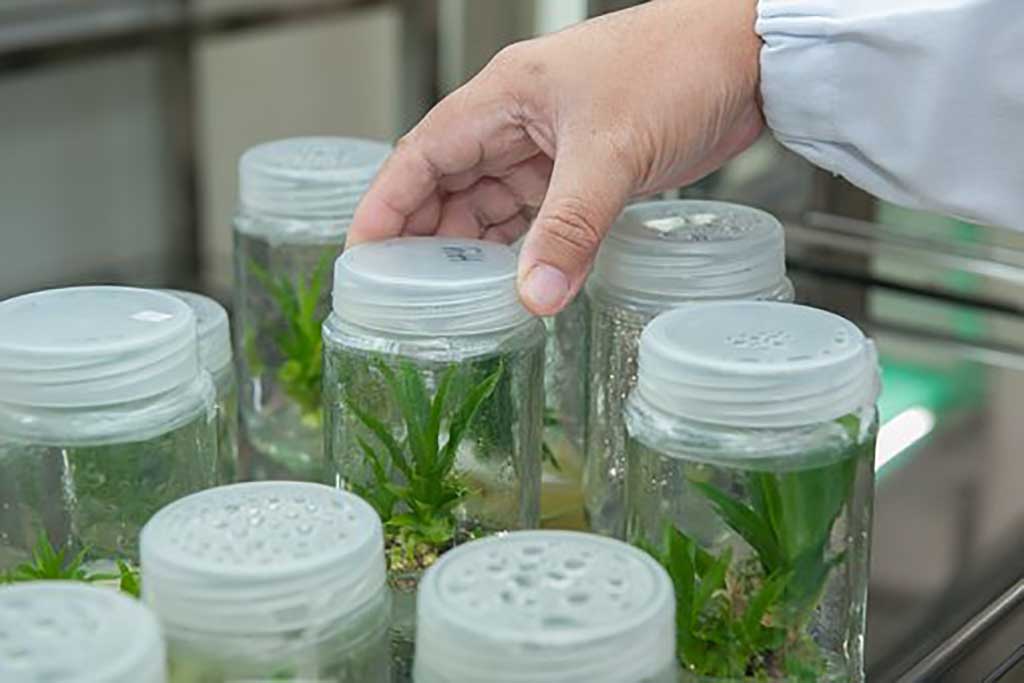Q1. Rules to explain “The phenomenon of inheritance of biological characteristics” was formulated by:
A) T.H.Morgan
B) Gregor Johann Mendell
C) Rudolf Virchow
D) Bateson
E) Lamark
Q2. Genetic research was activated and a revolution in modern biology occurred in the year:
A) 1951-53
B) 1961-63
C) 1971-73
D) 1975-71
E) 1981-83
Q3. Genetic engineering usually utilizes cells and plasmids of:
A) Bacteria
B) Viruses
C) Algae
D) Fungi
E) Parasites
Q4. “rDNA” is:
A) Ribosomal DNA
B) Riorazion DNA
C) Resolution DNA
D) Regenerate DNA
E) Recombinant DNA
Q5. DNA molecule into which a gene is inserted to construct a recombinant DNA molecule is:
A) Activator
B) Initiator
C) Vector
D) Starter
D) Accelerator
Q6. Concerning “PLASMIDS”, which statment is correct:
A) They are small, chmmosomal circular DNA molecules.
B) They are found in some bacteria and viruses.
C) They can replicate independent of the host cell chromosome.
D) Plasmids do not carry any genes which are responsible for useful characteristies.
E) We cannot insert foreign (required) gene into plasmids to pre[are recombinant DNA molecules.
Q7. Enzymes which are required to cut a source DNA molecule into small pieces and to cut plasmid to make a gap where foreign DNA fits into it are:
A) DNA Ugase Enzyme
B) Constructive Enzyme
C) Recombinant Enzyme
D) Restriction Enzyme
E) Regenerator Enzyme
Q8. The enzyme used to seal the DNA is:
A) Restriction Enzyme
B) Ligase
C) Polymerases
D) Reductase
E) Regenerator Enzymes
Q9: The enzymes that act like scissors in recombinant DNA technology are:
A) Restriction Enzymes
B) Ligase
C) Polymerase
D) Reductase
E) Regenerator Enzymes
Q10. Restriction Enzymes were disovered in:
A) 1940s
B) 1950s
C) 1960s
D) 1970s
E) 1980s
Q11. Each restriction enzyme cuts DNA at a specific site, called:
A) Cut ends
B) Sticky ends
C) Ligating ends
D) Recombination ends
E) Gliding ends
Q12. Now a days, insulin can be synthesized by genetically engineered bacteria:
A) Salmonella typhi
B) Pseudomonas aurigonase
C) Shigella sortnei
D) Bacteriodes fragills
E) Eschinchia Coli
Q13. An Organic compound used to make a sweetner by some genetically engineered bacteria is:
A) Phenyltryptamine
B) Phenylanaline
C) Ketone Bodies
D) Diacylglycerol
E) Peroxidase
Q14. The only plasmid for transgenic plant cells is:
A) Gr-plasmid
B) Sc-plasmid
C) Ti-plasmid
D) Pr-plasmid
E) Nc-plasmid
Q15) The First transgenic fruit approved is:
A) Water Melon
B) Apple
C) Mango
D) Tomato
E) Pomegranate
Q16. To increase the CO2 Fixation property, molecular scientists are working to enhance the efficiency of:
A) Ribolose biphosphate
B) Ribilose bicarbonate
C) Ribulose bicitrate
D) Ribulose bisuphate
E) Ribulose reductase
Q17. Human lactoferrin is a protein that is involved in ______ transport and has antibacterial activity.
A) Potassium
B) Iron
C) Sulphur
D) Copper
E) Calcium
Q18. The synthesis of complementry DNA (cDNA) on mRNA template is the:
A) Reverse translation
B) Dihybridization
C) Reverse transcription
D) DNA ligation
E) DNA polymerization
Q19. In Eukaryotic gene cloning, the synthesis of cDNA on mRNA template is being catalyzed by an enzyme:
A) DNA polymerase
B) RNA polymerase
C) DNA ligase
D) Reverse polymerase
E) Reverse transcriptase
Q20: In Eukaryotic gene cloning, the synthesis of cDNA on mRNA is catalyzed by “Reverse transcriptase” obtained from:
A) Retroviruses
B) Reoviruses
C) Rhabdoviruses
D) Bunyaviruses
E) Paramyxovirus
Answers:
- Gregor Johann Mendell
- 1971-73
- Bacteria
- Recombinant DNA
- Vector
- They can replicate independent of the host cell chromosome.
- Restriction Enzyme
- Ligase
- Restriction Enzymes
- 1960s
- Sticky ends
- Eschinchia Coli
- Phenylanaline
- Ti-plasmid
- Tomato
- Ribulose
- Iron
- Reverse transcription
- Reverse transcriptase
- Retroviruses





Leave a Reply
You must be logged in to post a comment.